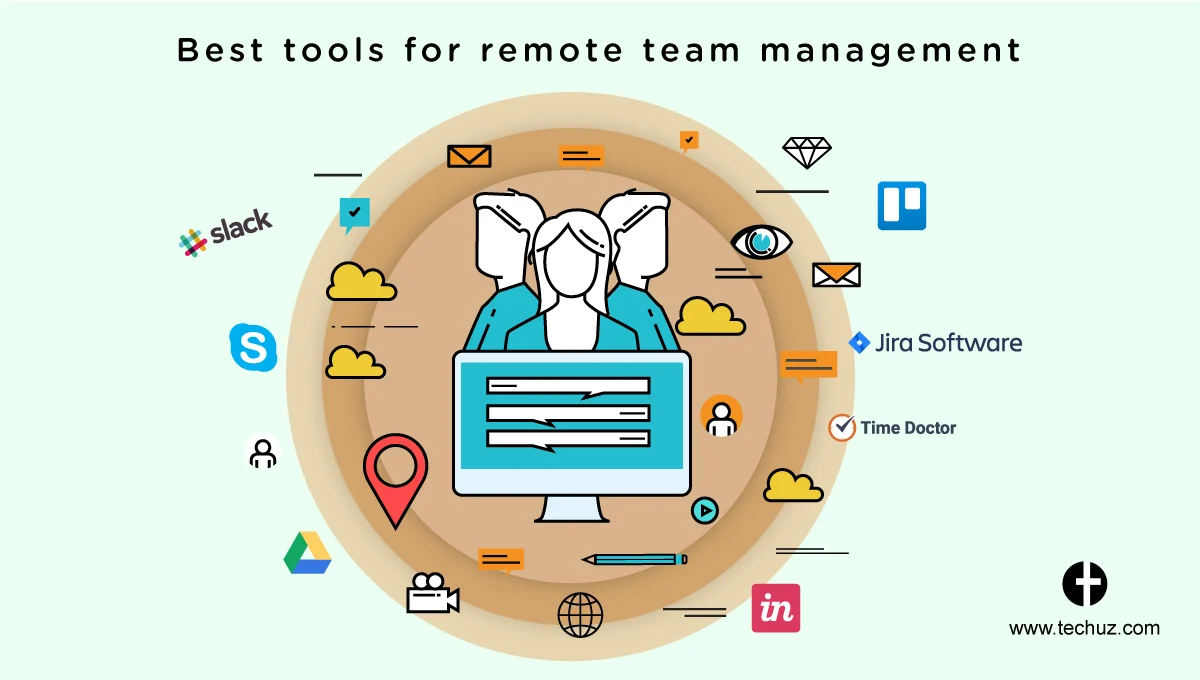The use of Essential Productivity Software for remote teams has become increasingly important in today’s work environment. With the rise of remote work, teams need reliable tools to communicate, collaborate, and manage projects effectively. Essential productivity software offers features such as task management, file sharing, video conferencing, and time tracking, which are essential for remote teams to stay organized and productive. These tools help teams stay connected and work together seamlessly, regardless of their physical location.
Remote teams can benefit from a variety of essential productivity software options to enhance their workflow. One popular option is project management software, which allows teams to track tasks, set deadlines, and monitor progress in real time. Additionally, communication tools such as instant messaging and video conferencing software are essential for remote teams to stay connected and hold virtual meetings. Time tracking software is also crucial for monitoring productivity and ensuring that team members are effectively managing their time. Furthermore, file sharing and collaboration tools enable remote teams to work on documents and projects together, no matter where they are located. These essential productivity software options empower remote teams to work efficiently and effectively, ultimately leading to increased productivity and success.
1. Communication and Collaboration Tools
Communication and collaboration are essential for remote teams to work efficiently. Tools like Slack, Microsoft Teams, or Zoom provide a platform for team members to communicate in real-time, share files, and collaborate on projects. These tools help remote teams stay connected and work together seamlessly, regardless of their physical location.
With features like instant messaging, video conferencing, and file sharing, these tools enable remote teams to have virtual meetings, brainstorm ideas, and keep everyone on the same page. They also provide a centralized hub for discussions, reducing the need for lengthy email threads and ensuring that important information is easily accessible to all team members.
2. Project Management Software
Project management software, such as Asana, Trello, or Jira, is crucial for remote teams to organize tasks, track progress, and meet deadlines. These tools allow team members to create and assign tasks, set priorities, and monitor the status of ongoing projects. With features like kanban boards, Gantt charts, and task dependencies, project management software helps remote teams stay organized and focused.
Additionally, these platforms often integrate with communication tools, allowing for seamless collaboration and updates on project-related discussions. They also provide visibility into each team member’s workload and progress, making it easier for managers to allocate resources and ensure that projects are completed on time.
3. Time Tracking and Productivity Tools
Remote work requires a high level of self-discipline and time management. Time tracking and productivity tools like Toggl, RescueTime, or Time Doctor help remote teams stay accountable and efficient. These tools allow team members to track the time spent on tasks, analyze their productivity patterns, and identify areas for improvement.
By providing insights into how time is allocated throughout the workday, these tools help remote teams optimize their schedules and minimize distractions. They also enable managers to monitor the productivity of their team members and make data-driven decisions to improve overall efficiency.
4. File Sharing and Storage Solutions
Remote teams need a reliable platform for sharing and storing files, documents, and other important resources. Cloud-based solutions like Google Drive, Dropbox, or Microsoft OneDrive offer secure and accessible storage for remote teams to collaborate on and share files with ease.
These platforms enable team members to upload, edit, and share documents in real-time, ensuring that everyone has access to the most up-to-date information. They also provide version control and file recovery options, minimizing the risk of data loss and ensuring that important files are always accessible to remote team members.
5. Virtual Whiteboarding and Brainstorming Tools
Brainstorming and ideation are essential aspects of teamwork, and remote teams can benefit from virtual whiteboarding and brainstorming tools like Miro, Mural, or Lucidspark. These tools provide a digital canvas for team members to collaborate on ideas, create mind maps, and visualize concepts in a virtual space.
Virtual whiteboarding tools enable remote teams to simulate the experience of in-person brainstorming sessions, allowing for the free flow of ideas and creativity. They also offer features like sticky notes, drawing tools, and templates, making it easy for team members to contribute to discussions and organize their thoughts effectively.
6. Employee Engagement and Feedback Platforms
Remote work can sometimes lead to feelings of isolation and disconnection, making employee engagement and feedback platforms essential for maintaining a positive work culture. Platforms like Officevibe, 15Five, or TINYpulse enable remote teams to gather feedback, recognize achievements, and foster a sense of community.
These platforms facilitate regular check-ins, pulse surveys, and peer recognition, allowing team members to share feedback, express concerns, and celebrate each other’s accomplishments. By promoting open communication and a feedback-driven culture, these platforms help remote teams stay engaged, motivated, and connected with their colleagues.
7. Virtual Learning and Development Tools
Continuous learning and professional development are important for remote teams to stay competitive and adapt to evolving industry trends. Virtual learning and development tools like Coursera, LinkedIn Learning, or Udemy provide access to online courses, training programs, and resources for skill enhancement.
These tools enable remote team members to expand their knowledge, acquire new skills, and stay updated on industry best practices, all from the comfort of their own workspace. By investing in the professional development of their employees, organizations can ensure that their remote teams are equipped with the necessary skills and expertise to excel in their roles.
8. Virtual Private Network (VPN) Services
Security and privacy are paramount for remote teams, especially when accessing sensitive company data and resources. Virtual Private Network (VPN) services like NordVPN, ExpressVPN, or CyberGhost provide a secure and encrypted connection for remote team members to access company networks and systems.
By using a VPN, remote teams can ensure that their internet traffic is protected from potential cyber threats and unauthorized access. VPN services also enable team members to bypass geographical restrictions and access company resources from anywhere in the world, without compromising on security.
9. Customer Relationship Management (CRM) Software
For remote teams that are involved in sales, marketing, or customer support, a robust Customer Relationship Management (CRM) software like Salesforce, HubSpot, or Zoho CRM is essential for managing customer interactions, tracking leads, and nurturing relationships.
CRM software provides a centralized platform for remote teams to store customer data, track communication history, and manage sales pipelines. It also offers features for email marketing, lead scoring, and performance analytics, empowering remote teams to engage with prospects and customers effectively, regardless of their physical location.
10. Remote Desktop Access and Support Tools
Remote desktop access and support tools like TeamViewer, AnyDesk, or Remote Desktop Services enable IT teams to provide technical assistance and troubleshoot issues for remote employees. These tools allow for secure remote access to desktops, servers, and devices, making it easier to resolve technical issues and ensure that remote teams have the necessary support.
By leveraging remote desktop access and support tools, organizations can minimize downtime, streamline IT support processes, and ensure that remote teams have reliable access to technical assistance whenever they need it. This ultimately contributes to a smoother and more productive remote work experience for all team members.
| Software | Purpose |
|---|---|
| Slack | Communication and collaboration |
| Trello | Project management and task organization |
| Zoom | Video conferencing and virtual meetings |
| Google Workspace | Document creation, sharing, and collaboration |
| Asana | Task tracking and team coordination |
Remote teams can benefit from using essential productivity software such as Slack for communication, Trello for project management, Zoom for virtual meetings, Google Workspace for document collaboration, and Asana for task tracking and coordination.



